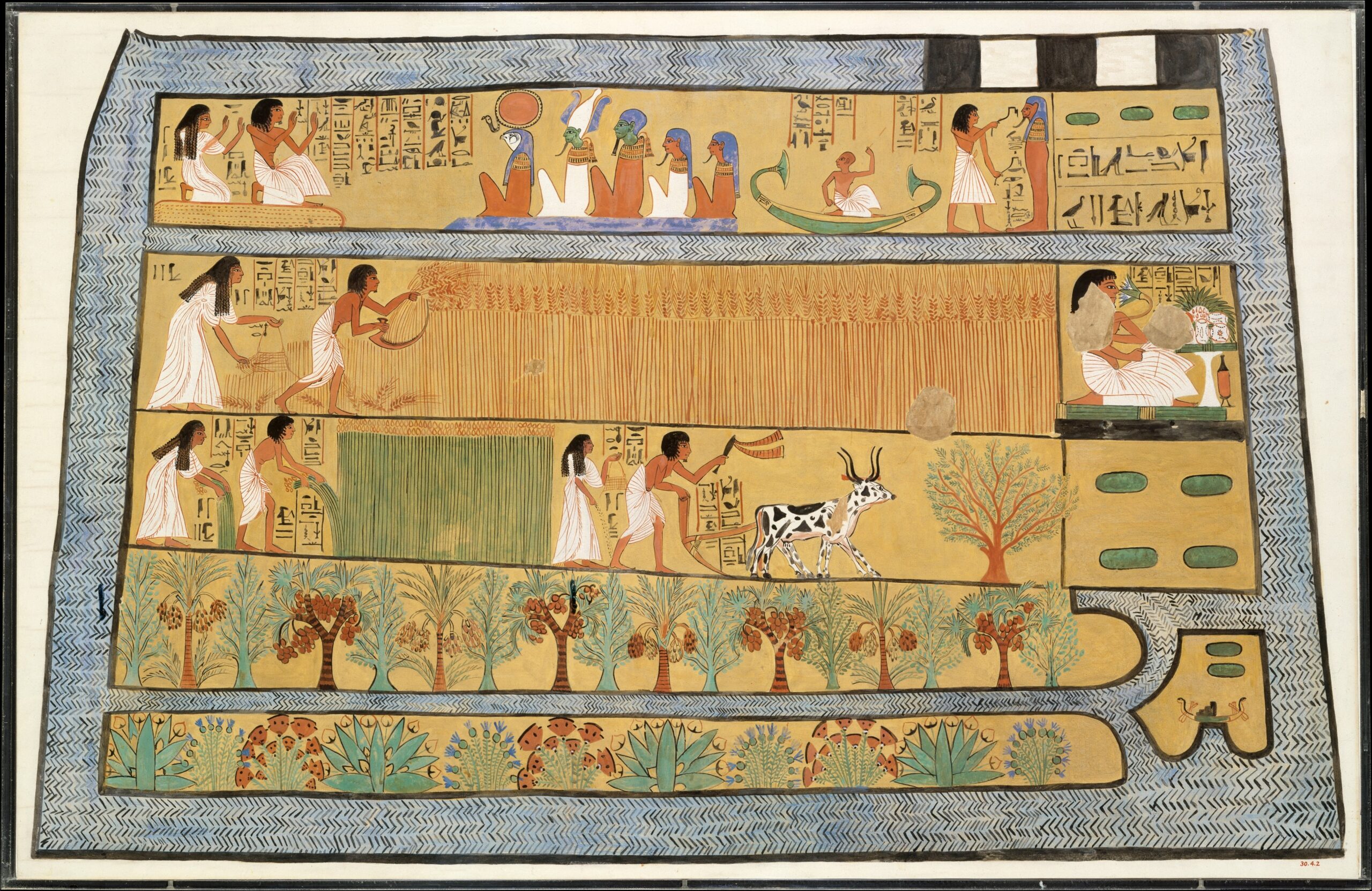Linseed: The “Very Useful” Plant
Is it linseed or flaxseed? What is the difference? We hear both terms in the industry and, in reality, they are interchangeable. Both names refer to the plant Linum usitissimum, which means “very useful” in Latin—a fitting name considering the many ways flax has been utilized by humans for thousands of years. In North America, the words linseed and linseed oil are more common in industrial applications whereas flaxseed and flaxseed oil are more common in food products. However, Europeans often say linseed when referring to flaxseed used in food. Regardless of which name you choose, flax is one of the most ancient and important crops in human history.
Georgia, 30,000 BCE
Flax is one of the world’s oldest crops and the first plant fiber used by humans. In a cave in the Eurasian country of Georgia, woven flax fibers have been found dating back 30,000 years [1]! It is likely that the prehistoric inhabitants of this cave used flax to make string and rope. Researchers have even hypothesized that the invention of woven flax fibers for rope helped these early humans survive the last ice age.
These ancient people were not using the cultivar Linum usitissimum that we grow today. They would have used a wild species of linseed called Linum bienne. L. bienne is naturally found throughout Western Europe, the Canary Islands, The Mediterranean and North Africa, and Iran [2]. Scientists think the domestication and initial cultivation of wild flax took place somewhere in the Near East around 8,000 years ago [3].
Ancient Egypt
By 5,000 BCE, linseed was being grown for linen and linseed oil in Egypt [4]. The Ancient Egyptians were experts in weaving flax and gathered a reputation for producing the world’s finest linen. The oldest garment in the world today, the Tarkhan dress, is from Egypt and is linen. It is estimated to be around 5,000 years old! Linseed was so important to Egyptian society that its cultivation appears in tomb paintings depicting the diseased in the afterlife (see Figure 2). In fact, without flax, we might not have mummies which the Egyptians wrapped in strips of linen.
![A ball of thread made from flax fibers from Egypt circa 1295-1070 B.C. [5].](https://pizzeyingredients.com/wp-content/uploads/2024/08/11.151.664-scaled-300x284.jpg)

Linseed in European History
Historical records of linseed in Europe are sparse, but we know that flax was a significant crop throughout the continent. Alexander the Great wore a suit of armor called a “linothorax” made of linen that was hardened with oxidized linseed oil [7]. During the Renaissance, famous paintings were made with linen canvases and linseed oil paints—favored materials of artists [8].
A famous Roman author, Pliny the Elder, wrote about flaxseed in his book Natural History [9]. Pliny describes the utility and universal nature of flax in Roman life:
To commence, then, with a production which is of an utility that is universally recognized, and is employed not only upon dry land but upon the seas as well, we will turn our attention to flax…What department is there to be found of active life in which flax is not employed?
He goes on to discuss how flax was used in food and medicine as well ship sails, thread, lamp wicks, and in the past, as offerings “to the divinities.” Pliny’s work remains one of the most important sources we have on how flax was grown in the past.
Flax Arrives in North America
Flaxseed was introduced to North America by early colonists. Flax was being grown in Quebec by 1617 and its cultivation expanded across the continent throughout the 1800s [10]. In the United States, its use declined in the 19th century in favor of cotton. Flaxseed is an expensive and labor-intensive crop, and cotton provided Americans with a cheaper, more efficient fiber. However, American flax cultivation continues today in the northern states of Minnesota and North Dakota. On the other hand, Canadian flaxseed has continued to thrive and is recognized as a high-quality product. The cool Canadian prairies produce flax that is especially rich in omega 3 fatty acids and competitive with other major producers.
Enduring Functionality
Despite the rise of synthetic fibers, linen remains valued for its quality and breathability. Linseed oil continues to be used in paints, varnishes, and linoleum. Renewed interest in flaxseed’s health benefits, including omega-3s and antioxidants, has increased its consumption for disease prevention and inclusion in animal feed. Flaxseed’s enduring relevance, from ancient uses to modern health benefits, is quite impressive!
References
[1] R. Harris. “These Vintage Threads Are 30,000 Years Old.” NPR. September 10, 2009. www.npr.org
[2] “Linum bienne Mill.” Plants of the World Online. Facilitated by the Royal Botanic Gardens, Kew. Accessed August 13, 2024. https://powo.science.kew.org/taxon/urn:lsid:ipni.org:names:544373-1
[3] Fu, Y. B., Diederichsen, A., Allaby, R. G. “Locus-specific view of flax domestication history.” Ecology and Evolution. December 2, 2011. doi:10.1002/ece3.57
[4] “Flax Production in the Seventeenth Century.” National Park Service. Accessed August 13, 2024. https://www.nps.gov/jame/learn/historyculture/flax-production-in-the-seventeenth-century.htm
[5] “Thread ball.” Metropolitan Museum of Art. Accessed August 13, 2024. https://www.metmuseum.org/art/collection/search/568328
[6] “Sennedjim and Iineferti in the fields of Iaru” Metropolitan Museum of Art. Accessed August 13, 2024. https://www.metmuseum.org/art/collection/search/548354
[7] “Flax-Linen in History.” Alliance for European Flax-Linen & Hemp. Accessed August 13, 2024. https://allianceflaxlinenhemp.eu/en/all-about-european-linen/flax-linen-in-history
[8] Cartwright, Mark. “Colour & Technique in Renaissance Painting.” World History Encyclopedia. Last modified October 20, 2020. https://www.worldhistory.org/article/1628/colour–technique-in-renaissance-painting/
[9] Pliny the Elder, Bostock, John, Riley, H.T. “The Natural History” Perseus Digital Library. Accessed August 13, 2024. http://data.perseus.org/citations/urn:cts:latinLit:phi0978.phi001.perseus-eng1:19.2
[10] “The Biology of Linum usitatissimum L. (Flax).” Canadian Food Inspection Agency. Last modified August 18, 2022. https://inspection.canada.ca/en/plant-varieties/plants-novel-traits/applicants/directive-94-08/biology-documents/linum-usitatissimum-flax